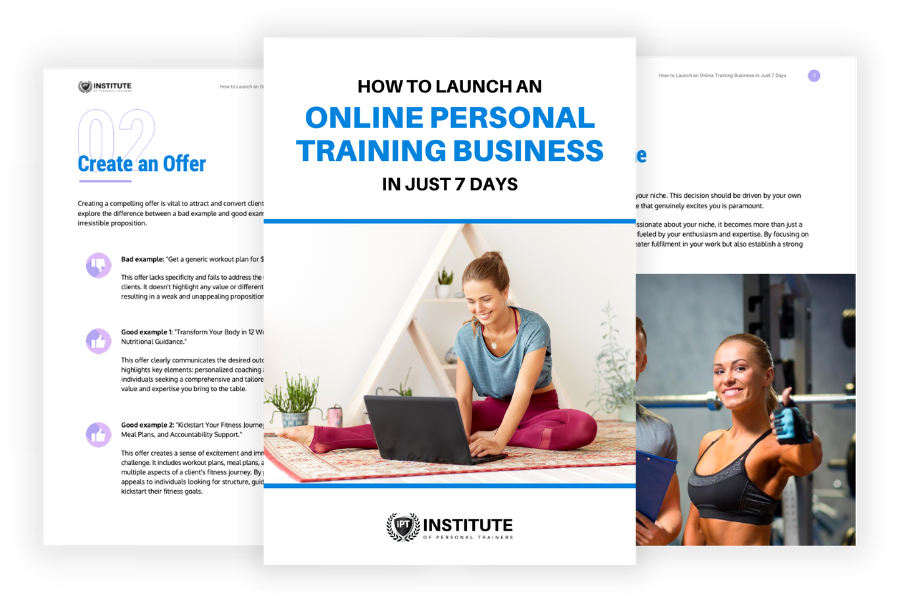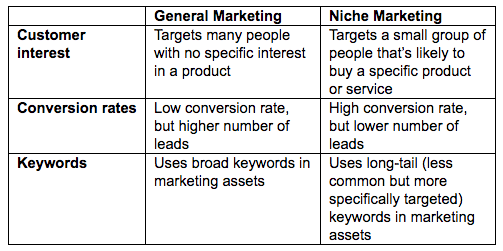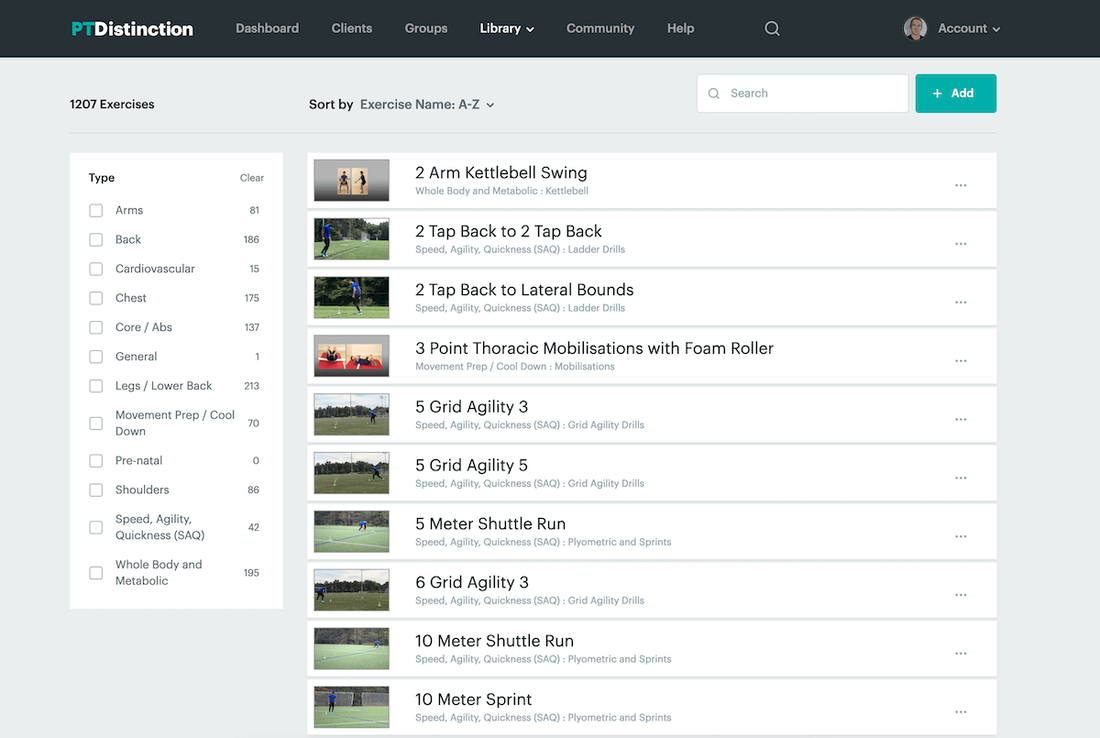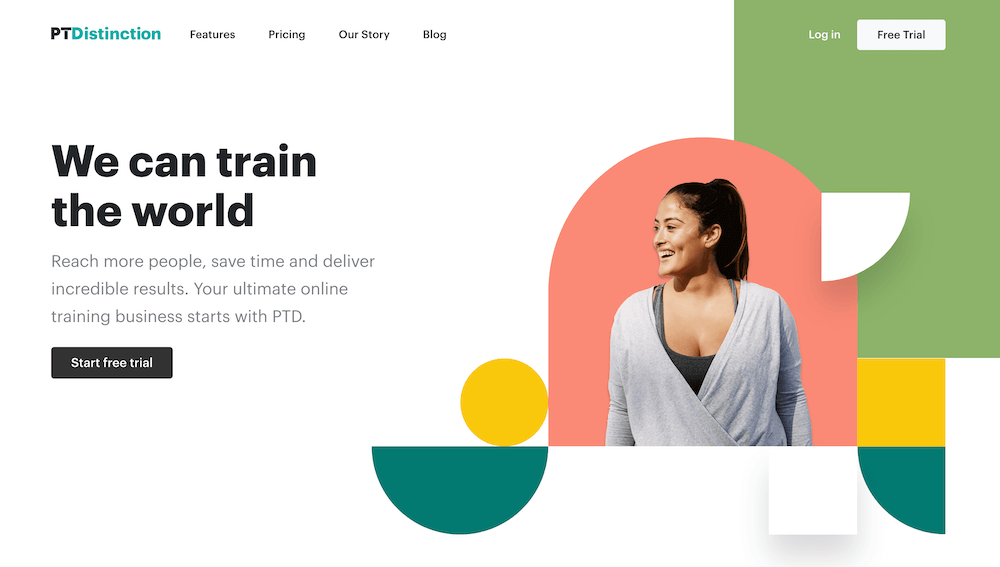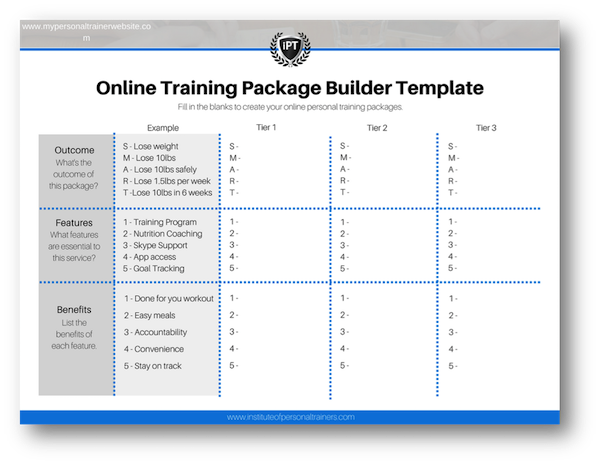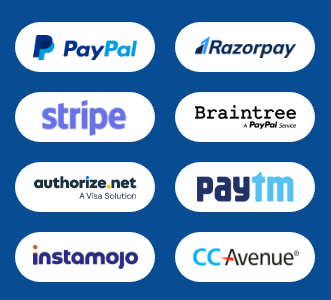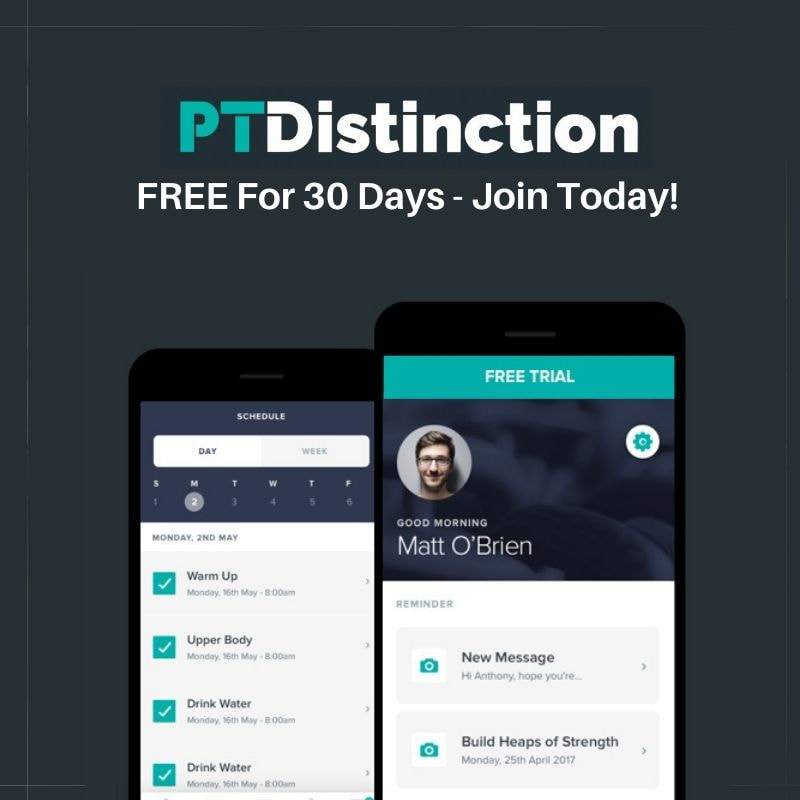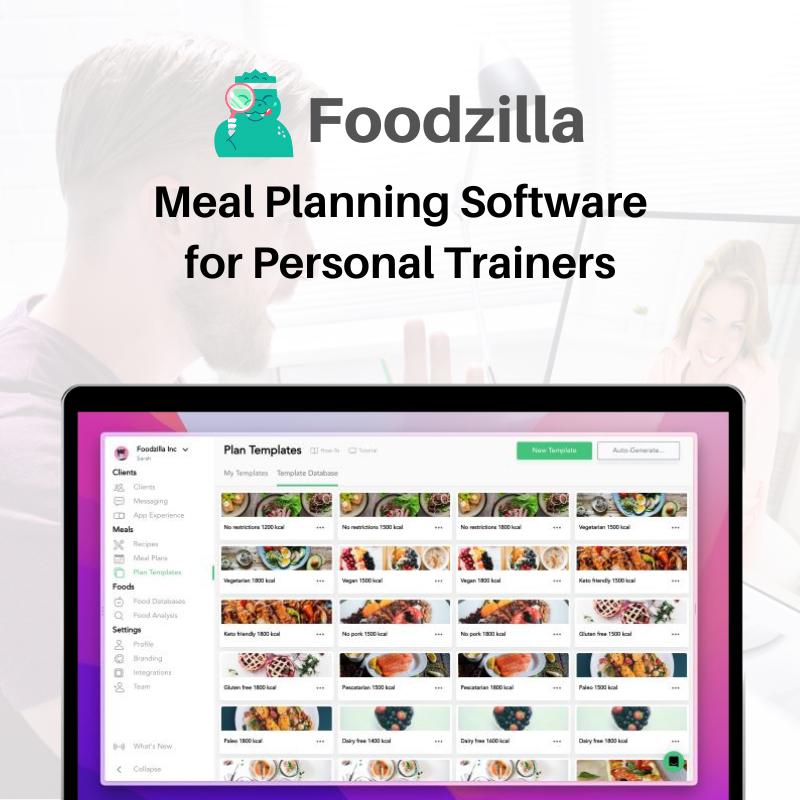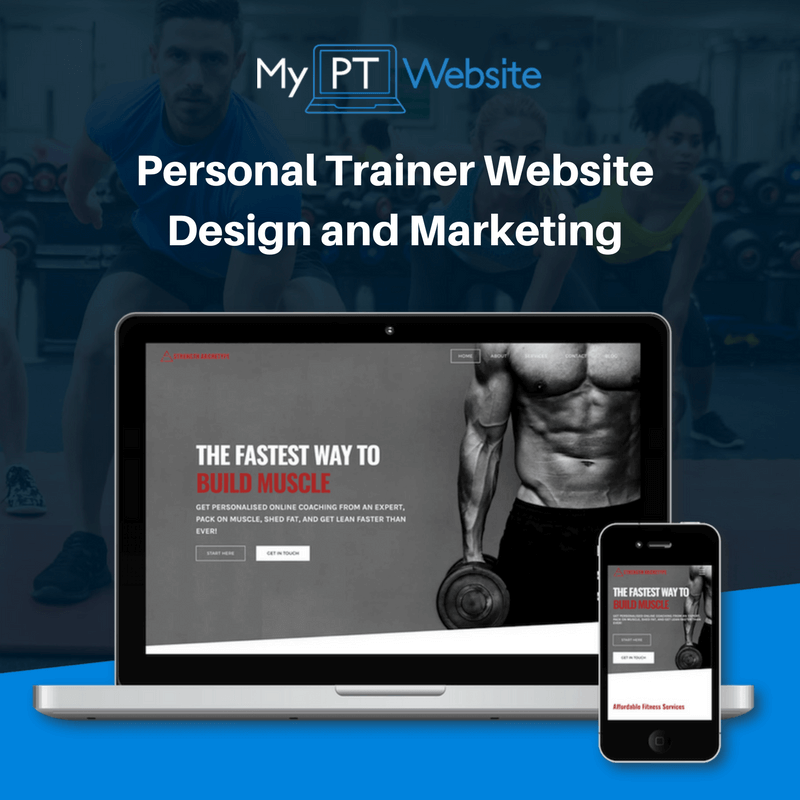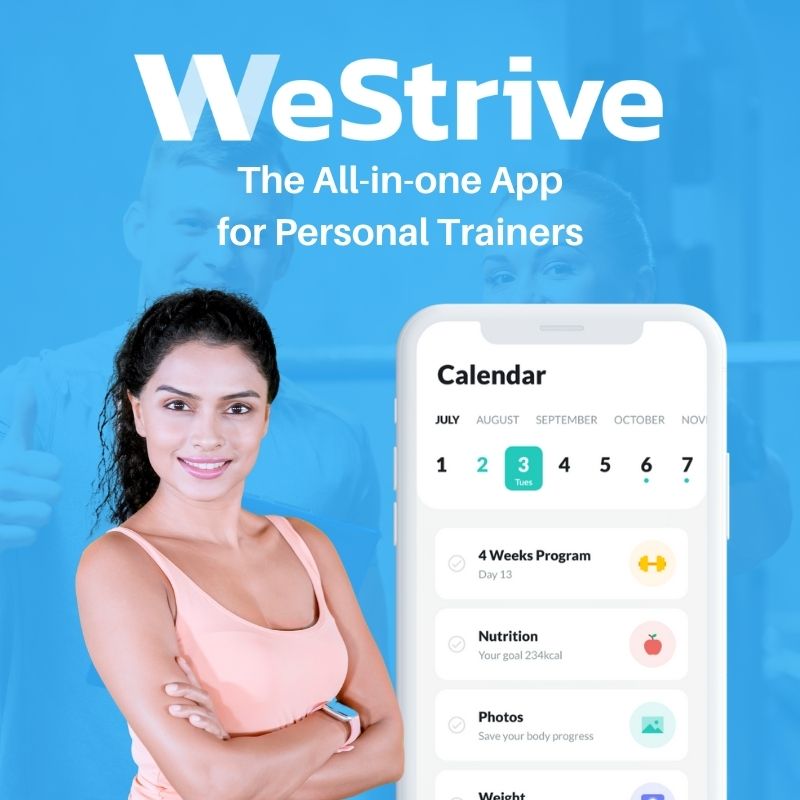|
FREE GUIDE: HOW TO LAUNCH AN ONLINE PERSONAL TRAINING BUSINESS
IN JUST 7 DAYS
✓ The new, better way of launching an online business
✓ The fastest way to create in irresistible offer ✓ A simple system to sell to clients who are interested |
|
More and more personal trainers are offering online services. While you have hundreds of thousands of potential customers around the world, competition is fierce, and online services present unique challenges that you need to be able to manage. With that being said, we’re going to take you through the 10 steps to follow to build a successful online personal training practice. Step 1: Determine Your Niche What sort of person are you going to target with your online training service? What problems do they face? How old are they? What kind of job do they have? Most importantly, where do they hang out online? Is it Facebook, LinkedIn or Instagram where you'll find them? These are some of the questions the best online personal trainers ask to nail down their niche. Establishing your ideal client base is imperative because you will be able to figure out how to speak to them, where to focus your online marketing strategy and what sort of content they value the most. RECOMMENDED COURSE: Marketing Fundamentals for Personal Trainers Step 2: Start Sharing Value Content If you want people to choose you as their online personal trainer, you need to show how you can help them solve their unique problem and get the results they desire. This is why you need to share valuable content on the channels they hang out. This will help you to grow your following while building trust and authority at the same time. The sooner you start, the better, building an audience via content marketing takes time. RECOMMENDED COURSE: Writing Course for Personal Trainers Step 3: Create a Workout Plan for Each Niche Next, put together a workout plan template for a sample client in every niche you want to target. For example, you may want to establish a training program for beginners if you aim to work with people who are completely new to exercise. A target market that wants to get stronger, get better at specific sports or exercise for longevity will benefit from a strength training program and people who want to lose weight and change their body composition would want to focus on a fat loss plan. Different niches may require a different approach to training, so having a framework you can use will save you time when programming for each client. A template will be a great base for creating individualized programs for each client based on their specific needs. Step 4: Compile an Exercise Video Library There are several options available to you when compiling an exercise video library. You can collect links to YouTube of existing videos from other trainers, you can upload your own and organize them into a spreadsheet in different categories and then use tags so you'll know which exercise program template they belong to, or you can use an app like PT Distinction which has a massive white label library for you to use. PT Distinction have over 1,200 exercises and systems to help you deliver programs to your client via a white label app. A lot of the leading solutions have video libraries, which you are free to use under your own brand. More about this in the next step. Step 5: Choose Your Online Training Software We’ve already touched upon exercise video libraries, yet this is just one of many features you can make the most of with online training software. You can also customize workout programs, track client progress, put together reports, create an online group coaching experience via in-app messaging, habit coaching reminders and much more. There are many great options out there. PT Distinction is considered one of the leading solutions. It offers habit coaching, nutrition coaching, program design tools, advanced scheduling, and many other features, which can be managed from anywhere in the world. We generally recommend PT Distinction because they have the best track record but we've also reviewed a number of other online personal training platforms, helping you to select the best one for you. Check out our reviews on TrueCoach, Gymvio, Exercise.com, WeStrive, Fit SW and Striive. Step 6: Create Your Online Packages Next, you need to create your online training packages, ensuring potential clients can choose a suitable program for their needs. The most popular packages are fixed term plans, like 3, 6 or even 12-months coaching plans that focus on a specific fitness goal or monthly rolling services where the focus is more on progress. You can also offer online group coaching where most of the communication, support and accountability is done via a support group either integrated into the software you use or via Facebook groups or other social media channels. You can decide to have one flagship offer and once clients have completed it they can enroll onto a maintenance plan. Of course, it all depends on your target audience and the type of services you plan on offering. You can use our online PT package price calculator to figure out competitive and profitable rates for each package. Step 7: Create Your Lead Generation Workflow A lead generation plan is pivotal. The obvious place to begin here is with a sleek and stylish personal trainer website so you can brand your business and create an online presence. Consider a low barrier offer to tempt people to take the first step, such as an application form, video consultation, or strategy call. Offering a free consultation is a great idea if you have a lot of time on your hands and want to build rapport with prospects so you can then show them how you can help them solve their problem. If you are fairly busy and prefer a more automated approach to getting new clients, creating a workflow where leads can go through the steps, filling out an application form and even booking a paid consultation or signing up straight away, that can work too. RECOMMENDED COURSE: Build a PT Website Step 8: Decide How You'll Take Payments Next, consider how you are going to take payments. From Stripe to PayPal, there are many different payment processor systems for personal trainers. When selecting from the various options, some of the factors you need to consider include deposit speed, charge-back cost, monthly/set-up fees, international fees, and transaction fees. Ease of use and website integration also need to be taken into account, especially if your goal is to automate the client journey. Step 9: Ensure You’ve Got Everything You Need At the very least you'll need a laptop or tablet and a smartphone and a stable internet connection to run your business online. If you're the one who likes to travel, you might also want to have a mobile internet plan that can accommodate for that. If you are going to be doing virtual workout sessions, you might also want to set up a home gym and source the type of equipment your clients would use. If were talking holding sessions via Zoom, Skype or other video call services, you will need a good computer, fast broadband Internet, a microphone, a quality camera, and potentially a big screen smart TV so you can see the clients from a distance while demonstrating the exercises. If the goal is to run live or on-demand group sessions, you might also want to sign-up for a streaming platform to make your life easier. Step 10: Start Promoting Your Services Finally, marketing is key for any business, and online personal training is no different. Most personal trainers tend to use a blend of paid and free marketing approaches. Paid advertising delivers quicker results, but it obviously costs money. Examples here include Facebook Ads, Google Ads, and PPC. Whether or not you do go down the paid route, organic, free marketing channels need to be incorporated into your campaign. From podcasts and videos to blogging and social media marketing, there are many different approaches here. While results can take a little bit longer, they are sustainable, and growing your business organically is the only way to ensure long-term success and increase visibility. While we added this as the last step, you can also start promotions when you start publishing content in step 2, so long as you're confident you'll be able to complete all steps by the promised launch date. RECOMMENDED COURSES: Social Media Marketing for PTs Email Marketing for PTs Search Engine Marketing Get Started with Online Personal Training Today If you follow the 10 steps we have mentioned above, you have a great blueprint for success when it comes to online personal training. Don’t underestimate just how important consistency is, as is having good systems in place.
|
Our All In One Platform
Check out out all in one business & marketing platform for personal trainers!
WEBSITE BUILDER | FUNNELS |MEMBERSHIPS | SCHEDULING| EMAIL MARKETING| PAYMENTS| CRM | AI ASSISTANT | SURVEYS
Popular Articles
Trusted Partners
We work closely with some of the best service providers in the fitness industry.
Categories
All
|

